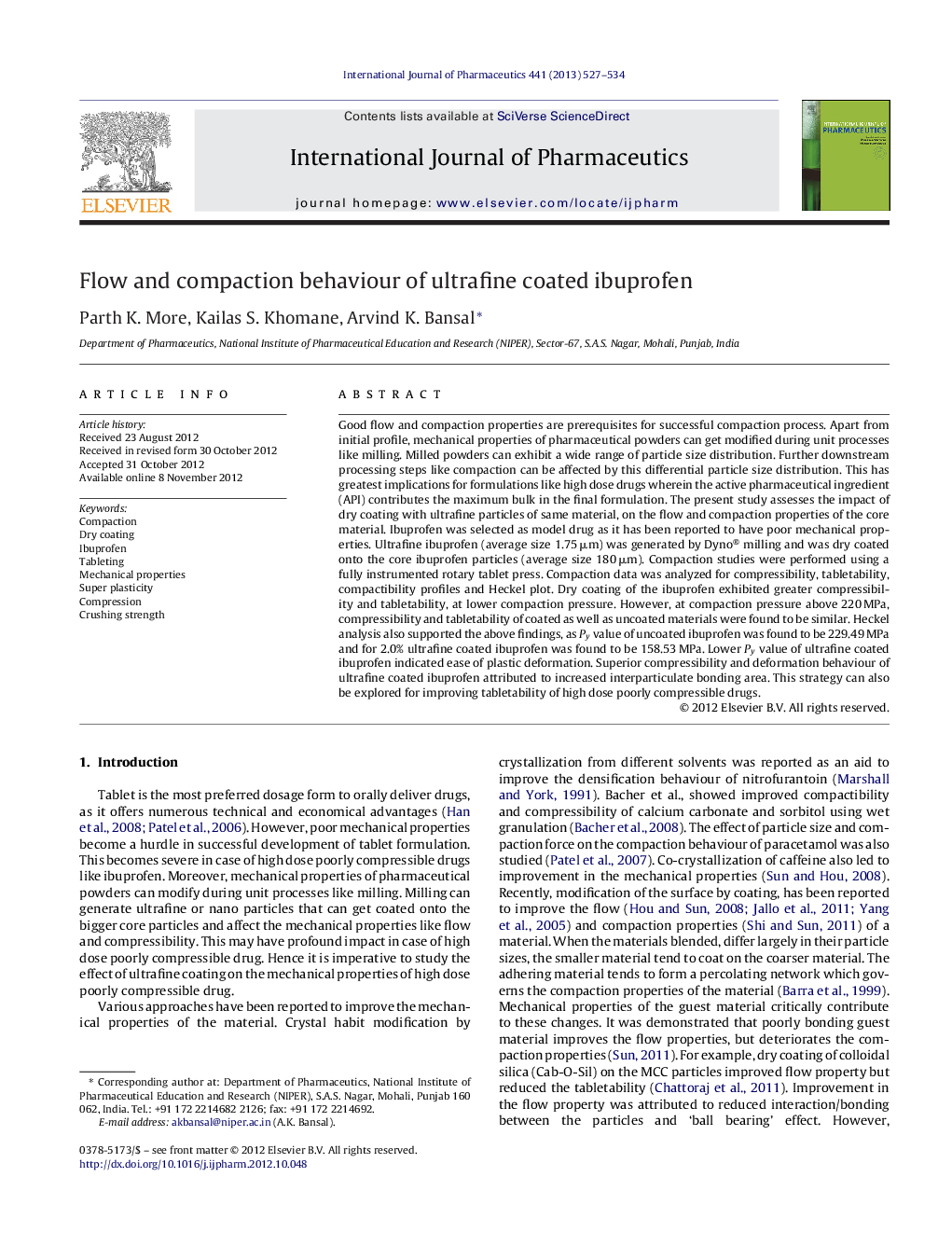| Article ID | Journal | Published Year | Pages | File Type |
|---|---|---|---|---|
| 5820283 | International Journal of Pharmaceutics | 2013 | 8 Pages |
Abstract
Good flow and compaction properties are prerequisites for successful compaction process. Apart from initial profile, mechanical properties of pharmaceutical powders can get modified during unit processes like milling. Milled powders can exhibit a wide range of particle size distribution. Further downstream processing steps like compaction can be affected by this differential particle size distribution. This has greatest implications for formulations like high dose drugs wherein the active pharmaceutical ingredient (API) contributes the maximum bulk in the final formulation. The present study assesses the impact of dry coating with ultrafine particles of same material, on the flow and compaction properties of the core material. Ibuprofen was selected as model drug as it has been reported to have poor mechanical properties. Ultrafine ibuprofen (average size 1.75 μm) was generated by Dyno® milling and was dry coated onto the core ibuprofen particles (average size 180 μm). Compaction studies were performed using a fully instrumented rotary tablet press. Compaction data was analyzed for compressibility, tabletability, compactibility profiles and Heckel plot. Dry coating of the ibuprofen exhibited greater compressibility and tabletability, at lower compaction pressure. However, at compaction pressure above 220 MPa, compressibility and tabletability of coated as well as uncoated materials were found to be similar. Heckel analysis also supported the above findings, as Py value of uncoated ibuprofen was found to be 229.49 MPa and for 2.0% ultrafine coated ibuprofen was found to be 158.53 MPa. Lower Py value of ultrafine coated ibuprofen indicated ease of plastic deformation. Superior compressibility and deformation behaviour of ultrafine coated ibuprofen attributed to increased interparticulate bonding area. This strategy can also be explored for improving tabletability of high dose poorly compressible drugs.
Related Topics
Health Sciences
Pharmacology, Toxicology and Pharmaceutical Science
Pharmaceutical Science
Authors
Parth K. More, Kailas S. Khomane, Arvind K. Bansal,
